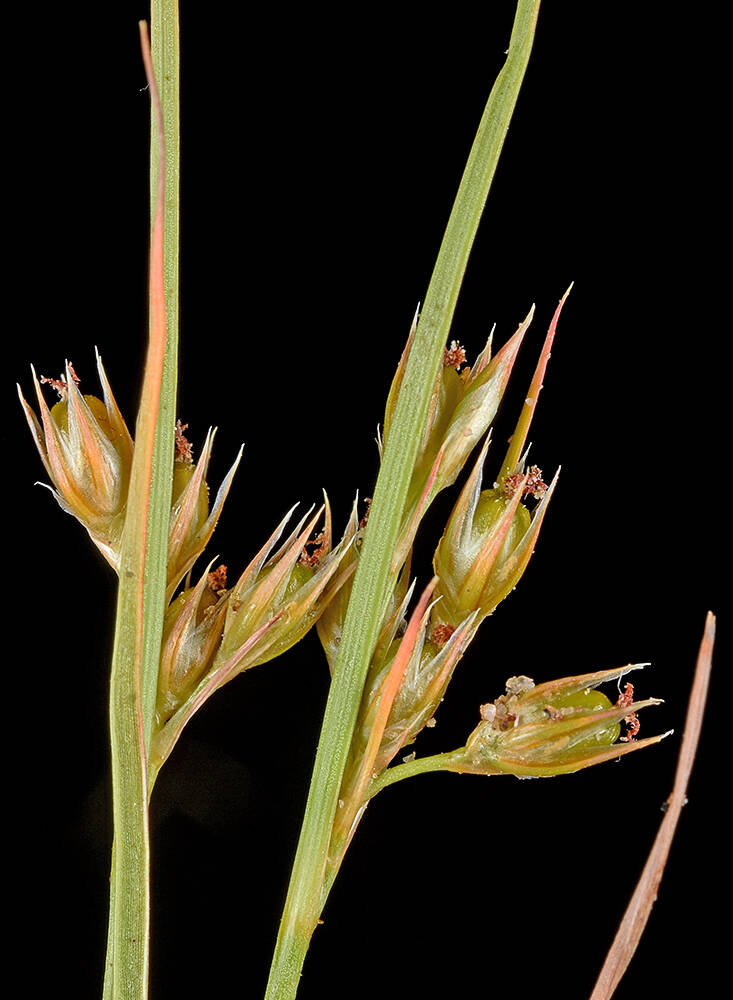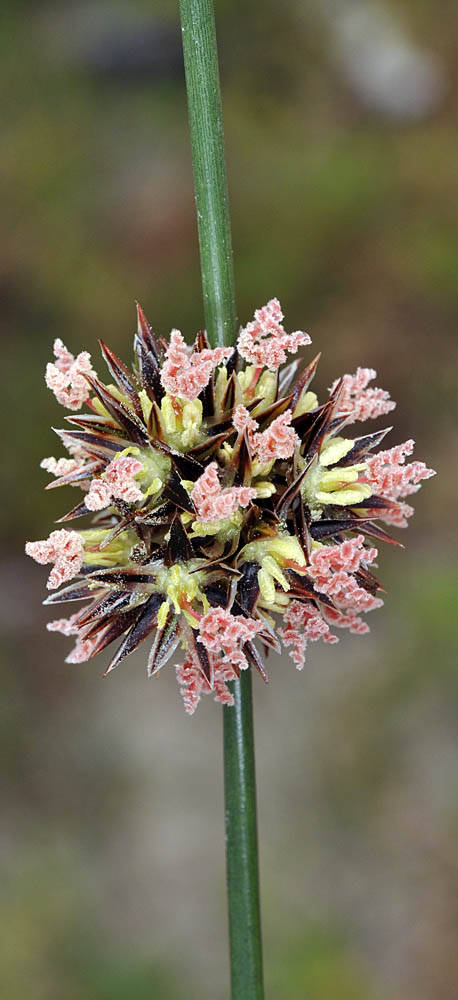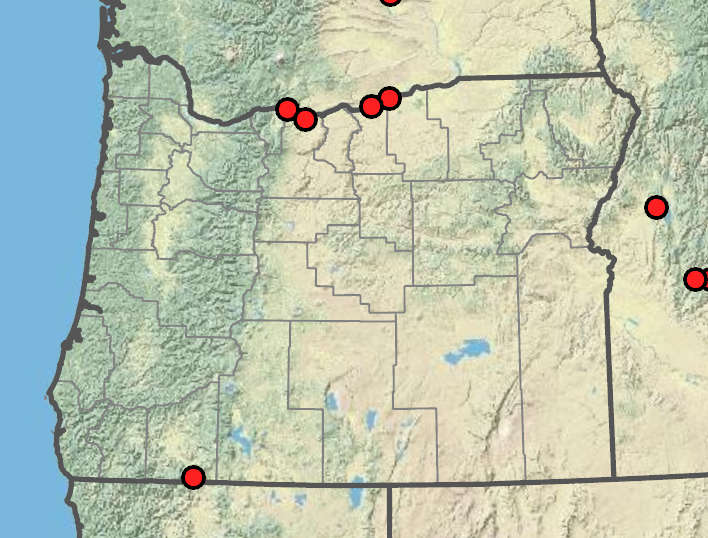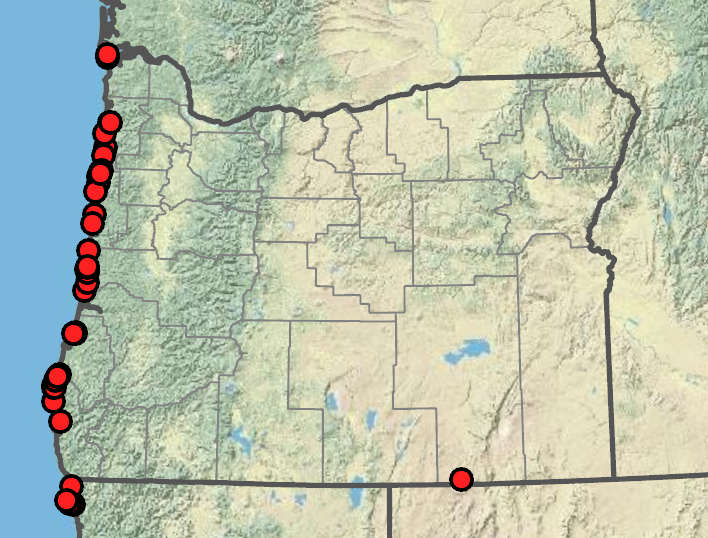Juncus interior
Juncus lescurii
interior juncus
San Francisco rush
thin and wiry;
blade flat and slightly inrolled;
auricles soft, 2-textured, usually thicker proximally and more opaque than thin distal margin, 0.4–0.8(1.2)mm; dirty white to translucent; dull, rounded.
lacking blades;
distal sheaths 5–12 cm, green to dark brown or blackish distally; dull or slightly shiny; smooth;
apex symmetrical; thin, not winged.
cymes, 1.5– 7 cm;
bractlets subtending flowers acuminate to aristate.
variable; a loose or sparse cluster, often lobed; at least some branches usually visible;
inflorescence bracts not swollen.
tepals 6, light brown;
tepal tips acuminate;
stamens 6;
filaments 0.8–1.1 mm;
anthers 0.3–0.7(0.9) mm;
styles 0.1–0.4(0.5)mm.
tepals 6, usually 6–8 mm, dark brown-striped;
stamens 6;
filaments 0.3–0.9 mm;
anthers 0.9–2.3 mm;
styles 1–1.8 mm.
3.3–4.7 mm; longer than the tepals, light brown;
apex obtuse to truncate, not ridged or crested, 1-chambered.
4–5 mm; shorter than the tepals, dark brown;
apex acute, 1-chambered.
0.3–0.45 × 0.15–0.25 mm, apiculate.
0.6–1.1 × 0.4–0.6 mm, often silvery, apiculate.
=80.
Juncus interior
Juncus lescurii
River shores. 50–200 m. Col. CA, ID, WA; throughout North America. Native.
Damp dunes, sandy shores, coastal fresh-water marshes. 0–50m. Est. CA. Native.
This species is identified by the large flowers typical of J. breweri and the more open inflorescence found in J. balticus. It is possibly derived from hybrids between those two species and often grows with them. It was long thought to be endemic to the San Francisco Bay area (Lint 1977).
Peter Zika
Peter Zika
- Local floras:
BC,
CA,
OR,
WA
- Local Web sites:
CalFlora,
CalPhotos,
Flora NW,
PNW Herbaria
WildflowerSearch
iNaturalist (observations)
USDA Plants Database
- LBJ Wildflower Center
- SEINet
- Plants of the World Online
- Encyclopedia of Life
- Wikipedia
- Google Image Search



